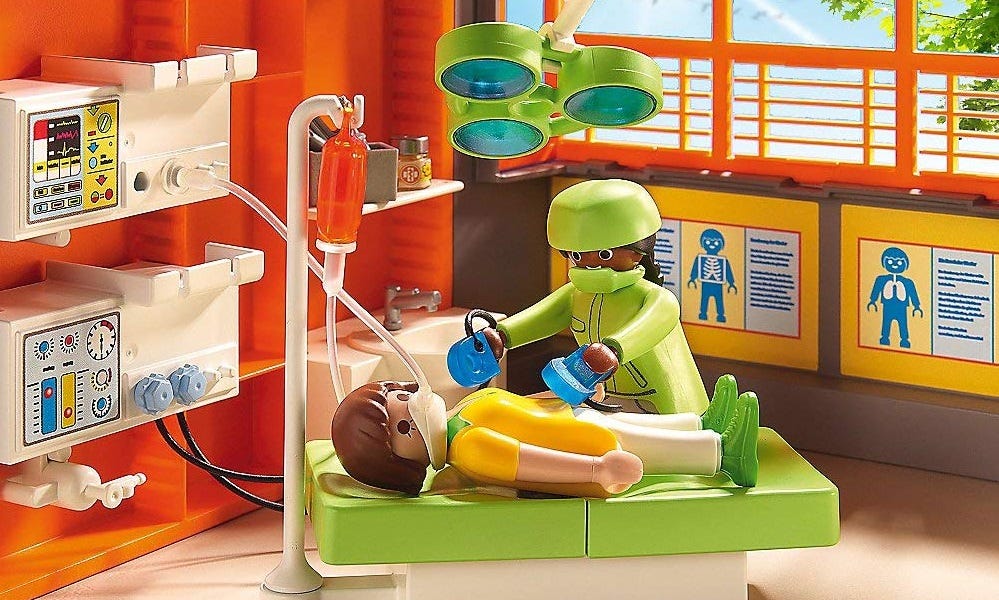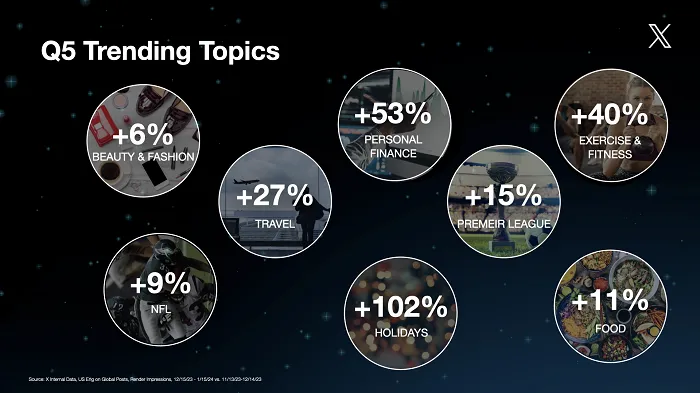Great customer service helps you retain customers, attract new business, and increase customer lifetime value. In other words, it’s essential to success. Customers who feel supported — and seen — are more likely to stick around. On the flip side, if your customers feel neglected or have a poor service experience, they’ll leave — and probably won’t come back.
In B2B marketing, caring for customers is often referred to as “customer success.” We’ll look more closely at the terms “service,” “support” and “success” below.
In a 2021 Qualtrics/ServiceNow study, 43% of respondents said they’d likely switch brands after only one negative customer service experience. Another study by Statista revealed that between 2016 and 2020, 40% of U.S. customers said they stopped doing business with a company because of poor customer service.
Technology, as is often the case, is helping companies meet customer expectations around customer service and success, bridging communications across multiple channels and devices, and setting customers up for better buying experiences.
Several important trends are driving the adoption and reinvention of the enterprise customer service stack. They include the need to future-proof the customer service tech stack, a drive toward more asynchronous text-based communication, and a push toward unifying channels and communications to enhance customer experience.
It’s clear that customer service and success — and the tools that enable and facilitate them — are essential for any business, no matter the size or product.
In this post we’ll cover:
What are customer service and success?
Customer service and success are two sides of the same customer experience coin, but there are slight differences.
Customer service and support (CSS) is focused on handling customer inquiries and complaints in real time. It’s reactive, satisfying customer problems and addressing issues quickly in a way that benefits both the customer and the company.
Customer success is about anticipating your customers’ needs and creating an ideal experience throughout the entire buying journey. Its proactive, employing tools and systems that help meet changing customer expectations (and behaviors) in an agile, scalable way.
While customer service is important for all businesses, customer success has been traditionally associated with companies that rely on recurring revenue, such as subscription-based businesses and B2B organizations with long sales, onboarding, and implementation cycles.
But these days, all companies — including B2C and retail businesses — need to prioritize customer success. It’s an essential marketing and future proofing strategy.
Why marketers should care about customer service and support
Customer service can make a brand or it can break it. Companies that excel at it get customers for life, ones who become the kind of word-of-mouth brand ambassadors that marketers’ dreams are made of.
Mess it up, though, and you can make brand-enemies for life. To really succeed, customer service has to be an enterprise-wide value and not just part of a business unit.
Who uses or works with customer service and success tools?
Customer service and success teams keep customers happy which helps ensure continued business from existing and new customers. Both teams serve customers and help make their experience with the company a good one. To achieve this, they each have a slightly different focus.
The customer service representative (CSR) team is responsible for handling customer inquiries, complaints, and problems. They help resolve issues in real time.
Some examples of CSR roles include:
- Agent/representative: A customer’s main point of contact with your company – fields customer inquiries, handles complaints, and resolves problems.
- Supervisor: A management role that oversees support team operations, assigns tasks to agents, and makes sure goals are met.
- Quality assurance (QA): QA monitors and evaluates CSR team activity (e.g., calls, emails, chats) and makes sure the CSR team provides high-quality customer service.
The customer success management (CSM) team advocates for customers, prioritizing their needs and providing a big-picture overview of the customer experience for other teams (including marketing, sales, and CSR teams).
CMS teams tend to have a longer view of customer success which includes identifying and addressing issues that might cause customer churn. Their primary goal is to help customers get the most from a product or service.
Some examples of CSM roles include:
- Customer success manager/advocate: Another key point of contact between the customer and organization, the CSM addresses issues (e.g., long wait times, inconsistent communication) that might cause customer dissatisfaction and/or churn.
- Implementation specialist: A specialized role focused on helping customers set up and use the company’s products or services.
- Product specialist: An expert who provides detailed guidance and answers to product/service-specific questions.
- Tech support engineer: A technical expert who helps customers resolve more complex technical issues or problems.
The market for helping companies better serve their customers is vast. The U.S. contact center software market alone was valued at nearly $24 billion in 2021 and is projected to grow 23% by 2030.
Several trends are fueling this growth, including the rapid adoption of cloud and virtual contact centers, chatbots, and prescriptive AI that automates previously manual tasks like case routing and problem resolution. There’s also a very real need to streamline customer interactions across multiple channels (otherwise known as customer experience).
Gartner identified four components needed for CSS tools. They are:
- Call management – log and manage incoming calls and transactions.
- eService suites – self-service tools that empower customers to communicate with an organization using email, chat, and social media.
- Field service and dispatch (FS/D) – assign and track work orders for field service technicians.
- Contact center – a centralized location where CSRs handle customer contact across all channels and communication types (voice, web, fax, mobile, etc.).
There are four main types of software associated with CSS including:
- Call center: enables CSRs to manage phone calls, track call activity, and measure performance. Examples include Five9, Ringover, and Twilio. Features typically include inbound call center capabilities like call automated call routing, call recording, and call queueing, interactive voice response (IVR), and call analytics.
- Live chat: Can be a standalone tool or integrated with all-in-one customer service platforms. Llive chat software helps customer service reps communicate with customers in real-time via chat. Examples include Tidio, Qualified, and MobileMonkey. Key features include AI-enabled and 24/7 chatbot availability, co-browsing, conversation archiving, and a shared team inbox.
- Help desk: provides a centralized place for customer support reps to track, manage, and resolve customer inquiries and issues. Examples include Zendesk Support Suite, Zoho Desk, and Intercom. Common features include tracking/ticketing systems, knowledge base management, and self-service portals.
- Knowledge management (KM): provides a central repository for storing and organizing customer service and support-related information (FAQs, training materials, product documentation, etc.) Examples include Guru, Notion, and Zendesk. Focus is on facilitating knowledge dissemination with features like versioning, history, collaboration/feedback, permissions, knowledge sharing, templates, etc.
Gartner defines customer success as an approach versus a category of software:
“Customer success is a method for ensuring customers reach their desired outcomes when using an organization’s product or service. A relationship-focused customer success strategy includes involvement in the purchase decision, implementation and use of products or services and customer support.”
Customer success teams get a slightly different flavor of software tools compared with their CSR counterparts. These include:
- Customer success platforms: These help CSM teams track customer health, advocate for the customer internally, and prevent churn. Examples include HubSpot Service Hub, ChurnZero, and Gainsight. Key features include customer health scoring (by analyzing historical customer behavior data), customer profile creation, journey mapping, and playbooks. These platforms focus on improving the lifetime value of a customer by identifying when and where support is needed the most.
- Customer relationship management (CRM) tools: CRMs store customer profile information (contact information, interaction history, customer notes) and manage sales and marketing processes. CRM tools help build and support customer relationships, improving the entire process of customer data gathering and organizing. HubSpot and Salesforce are two of the most well-known CRMs, but there are many others including Zoho CRM, Pipedrive, and Monday.com.
- Product analytics (PA): PA helps CSM teams see which features customers are using (or not using) and how they’re using them. PA tools get marketing and product teams on the same page, with data that informs customer health scoring and can be used to prevent churn. Pendo is one example of a product usage data tracking tool as is Amplitude Analytics (for digital products).
- Customer journey orchestration: This is used to visualize the customer’s journey across touchpoints and own the end-to-end customer experience. Mapping customer journeys can help teams identify gaps and optimize the experience. Examples of tools that facilitate this include Treasure Data, a customer data platform (CDP) and Qualtrics, a customer experience platform (CXP).
How prioritizing customer service and success helps marketers succeed
Getting customer service and success right translates to more sales, more customers, and a better bottom line. Good experience is often the biggest priority a customer has when doing business with a company—trumping price, product, and brand.
Nearly 60% of 1000 consumers in a recent Forbes survey said they would pay more for good service. The same survey found that convenience is valued over price, with 70% of respondents saying they’d pay more for convenience.
A strong customer service and success strategy can be a powerful marketing tool by:
- Providing valuable customer insights that inform marketing campaigns.
- Reducing customer churn.
- Facilitating communication between customers and businesses.
- Motivating positive customer reviews and testimonials.
- Increasing customer loyalty and customer lifetime value.
- Being more competitive.
A study by Deloitte revealed that companies who prioritize customer experience (e.g., “customer-centric” companies) were 60% more profitable than those who don’t. These companies spend time getting to know their customers and focus on using tools and processes that solve customer problems and deliver better customer experiences.
Get the daily newsletter digital marketers rely on.
A strong (and deliberate) customer service and success process supports marketers by improving customer experience. It creates happy customers which leads to more sales, improved customer lifetime value, and much more successful marketing campaigns. It’s also the best way to futureproof your organization by keeping up with changing trends in customer expectations and behaviors while staying one (or ten) steps ahead of the competition.
Read next: What is CRM and how does it support marketing?






































































